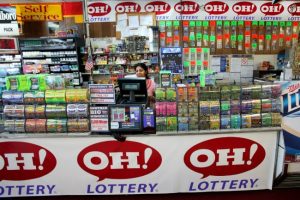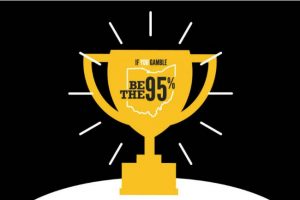 Ohio takes on gambling problems with a new program, aiming to decrease the rate of the gambling addicts throughout the state. It was announced that among the most fervent proponents of the idea are the lottery retailers, who agreed on adding a special button to each self-serve lottery terminal, which is to print special free-of-charge informational bulletins, providing details regarding problem gambling treatment programs.
Ohio takes on gambling problems with a new program, aiming to decrease the rate of the gambling addicts throughout the state. It was announced that among the most fervent proponents of the idea are the lottery retailers, who agreed on adding a special button to each self-serve lottery terminal, which is to print special free-of-charge informational bulletins, providing details regarding problem gambling treatment programs.
Ohio is to follow North California’s blueprints, adding a special button to all of its self-serve lottery terminals. This is expected to happen at the end of October, allowing people to print out the special piece of paper, consisting more information about outreach and treatment programs. Ohio is to be the second state to take such actions to troubleshoot problem gambling issues.
The Problem Gambling Network of Ohio (PGNO) offers free help to compulsive gamblers around-the-clock, aiming to efficiently cope with the problem. Only a year earlier, it was reported that the state of Ohio has one of the highest percentages of problem gamblers in the country. This was a shocking revelation for the state’s officials, who needed to introduce an effective way to deal with the rising gambling “pandemia” throughout the state.
The slip of paper is to provide players with a phone number, which is 24/7 ready to assist gamblers. The lottery announced that this approach is discreet enough to win the gamblers’ trust and urge them to take the first step in fighting the problem gambling issues, and more precisely to admit that they do have a problem. Spokeswoman Danielle Frizzi-Babb added that the number of the hotline will be also visible on the machines.
Curious Information about Ohio Lottery
 It was reported that the Ohio Lottery is the first to propose such gambler-friendly initiative. Hence, it is not a surprise that it has won a prize for its public campaign “Be the 95%”. The campaign was launched by Ohio for Responsible Gambling, a joint venture between the Ohio Lottery Commission, Ohio Casino Control Commission, the Ohio Department of Mental Health and Addiction Services and the Ohio Racing Commission. The name of the campaign was inspired by the percentage of people, who gamble responsibly. Apart from this campaign, Ohio Lottery was voluntarily raising funds to the Wright State University School of Medicine for an educational program. Next summer, Cleveland is to play host to the 32nd National Conference on Problem Gambling.
It was reported that the Ohio Lottery is the first to propose such gambler-friendly initiative. Hence, it is not a surprise that it has won a prize for its public campaign “Be the 95%”. The campaign was launched by Ohio for Responsible Gambling, a joint venture between the Ohio Lottery Commission, Ohio Casino Control Commission, the Ohio Department of Mental Health and Addiction Services and the Ohio Racing Commission. The name of the campaign was inspired by the percentage of people, who gamble responsibly. Apart from this campaign, Ohio Lottery was voluntarily raising funds to the Wright State University School of Medicine for an educational program. Next summer, Cleveland is to play host to the 32nd National Conference on Problem Gambling.
Conclusion
 The gambling addiction prevention campaigns come as a response to the growing concerns about the social ills, which gambling can cause. Every country around the world, in which casino industry is legalized strives to introduce an adequate problem gambling framework. Some of them like Japan are introducing too strict regulations, which may produce the exact opposite of what is expected or even damage the gambling industry itself. Many experts recommend that the country’s (state’s) officials need to strike a happy medium, avoiding the two extremes – too lax or too tight measures.
The gambling addiction prevention campaigns come as a response to the growing concerns about the social ills, which gambling can cause. Every country around the world, in which casino industry is legalized strives to introduce an adequate problem gambling framework. Some of them like Japan are introducing too strict regulations, which may produce the exact opposite of what is expected or even damage the gambling industry itself. Many experts recommend that the country’s (state’s) officials need to strike a happy medium, avoiding the two extremes – too lax or too tight measures.



















